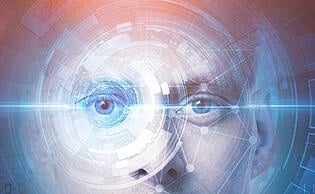In recent times, Web and Mobile Applications Testing are going through a great change. The breadth and depth of testing has grown leaps and bounds. Traditional way of testing is facing the challenge of managing high frequency of releases. Also, to cover all the test combinations of various versions of browsers, OS, screen orientations, resolutions etc., it’s not practical to have counting on just Manual Testing, specially with regards to validation of visual aspects of applications.
Automation can help a bit but has its own limitations and it is not an easy task to be in line with the release cycles. Additional challenge is to emulate human behavior in the testing process, and reflect the way a human being would interact with a web or mobile application. This is where Artificial Intelligence or AI comes into play. The role of AI in testing is not to create more automation but to increase the testing capability.

Artificial Intelligence is being used by business users in creation and management of workflows to predict future trends, which, in turn, helps in further growth of business and in getting new opportunities. It is being used in various industries like healthcare, automotive, financial services, logistics, etc.
There are three types of testing being performed under AI Testing:
- Smart Testing – Using AI to interact with a web/mobile UI as a human brain. This is a trend that is rapidly increasing in popularity.
- Visual Testing – The thought is not only to test whether the functionality works or not but to test that it looks right when it is displayed on the screen
- Intuitive Testing – The idea is to create automated tests for non-coder testers and verify the functionality
The main reason that AI is making headway is because of deep neural networks. Deep neural network is like a human brain. It uses sophisticated mathematical modeling to process data in complex ways. This is the largest difference in AI technology compared to the testing done 30 years ago. One of the main reasons for this is that we have more data than ever available to us in present situation, with improvements in algorithms that escapes the complicated coding process and Digital Transformation happening around the clock.
One of the areas in which deep neural networks is most successful is the visual space, which is in high demand. Deep neural networks have improved in recognizing images and videos to the point where they are able to come up with their own new algorithms. Now, we have the ability to utilize Machine Learning (ML) and AI capabilities within a visual testing tool as per our needs. The tool can interact with a web or mobile application in the same way a human does.
Visual Testing tools are able to recognize images, videos, and text apart from capturing slight differences that a human eye might not be able to. Using those capabilities, an AI can support the human side of Application Testing by helping to decide what is right and what is wrong in User Interfaces.
Visual Testing can also replace Manual Testing as AI can interact with an application in the same way a human does, but it is faster and much more accurate. This is being used in continuous delivery projects and can work across thousands of different devices and browsers. This will help to speed up many activities and tasks during the software development and delivery process in a more efficient and consistent way. Few of the Visual Testing tools in market are: Nightwatch, Storybook, Applitools Eye, Wraith and Screener.
The latest trend is that we can deploy brainwave scanning equipment to test user’s emotions as they operate an app. This gives testers a real picture of the reaction of a person brain and can be used to pinpoint the pain points and better understand the experience that a user is facing from the interface they are communicating with.
One of these systems could watch a person interact with an app and tell that while the UI is totally functional and has no defects, perhaps user was exhibiting signs of displeasure while interacting with certain parts of it.
These are only some of the recent areas in which we can develop more of automation compared to what we have been doing until now. These types of tests augment our testers compared to the past testing capabilities. AI is still in nascent stage, but everyone is leveraging ML and predictive algorithms in testing. We are on the right path and moving this type of AI continuous testing forward is an essential need as it is starting to disrupt the market, but the major breakthroughs are still ahead of us.
About Innominds
Innominds is a leading Digital Transformation and Product Engineering company headquartered in San Jose, CA. It offers co-creation services to enterprises for building solutions utilizing digital technologies focused on Devices, Apps, and Analytics. Innominds builds better outcomes securely for its clients through reliable advanced technologies like IoT, Blockchain, Big Data, Artificial Intelligence, DevOps and Enterprise Mobility among others. From idea to commercialization, we strive to build convergent solutions that help our clients grow their business and realize their market vision.
Interested! For any demos or POCs, please write to us at marketing@innominds.com and know more about our offerings.




